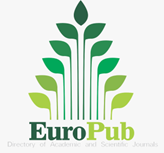Social change and community perceptions on change environment due to sand mining
DOI:
https://doi.org/10.61511/icese.v1i2.2024.493Keywords:
Keningar village, land use change, Merapi mountain, mine, paradigm, sand mining, social changeAbstract
Sand mining in Keningar village, which has been started since 1996, is still carried out by the community to date, even though the damage is already exist and severe. The community start to dredge the crop land to take the sand, then sell it. Sand mining activities are not only carried out by the residents of Keningar village, but also by another parties from outside the region. The change of land use from crop land into sand mining areas has many impact on various aspects of community life, both on social, economic and cultural aspects. The purposes of this study are to know the perspective of the community of Keningar village on sand mining activities that has been carried out to date, their effect for the environment, and social life patterns of the community of Keningar village. This study use qualitative method by describe all the information. The information was obtained from observations and unstructured interviews with several informants found at the site. The results of the study show that there is a social change in the community of Keningar village, caused by a paradigm shift from farmers to sand miners. The driving force for this phenomenon is economic factor, the demand for everyone needs are high. This paradigm shift has many effects not only on socioeconomic, but also for the environment. Massive exploitation of sand, gravel, and rocks cause the lost of fertile layers of soil and reduce groundwater reserves on community’s crop land. The sand mining can be controlled since the government applied mining license instrument. However, there is still illegal mining carried out between the landowners and mining entrepreneurs by simple agreement. In reality, the indigenous character of the community of Keningar village is farmers and charatcter of “nrimo ing pandum” which actually can be developed to an advance economy without damaging the environment, through the intervention of the government, academics, or other stakeholdes. And one of them can be solved through education.
References
Adedeji, O. H., Adebayo, H. ., & Sotayo, E. . (2014). Assessing Environmental Impacts of Inland Sand Mining in Parts of Ogun. Ethiopian Journal of Environmental Studies & Management, 7(5), 478–487. https://www.ajol.info/index.php/ejesm/article/download/108105/97927
Aretano, R., Petrosillo, I., Zaccarelli, N., Semeraro, T., & Zurlini, G. (2013). People perception of landscape change effects on ecosystem services in small Mediterranean islands: A combination of subjective and objective assessments. Landscape and Urban Planning, 112(1), 63–73. https://doi.org/10.1016/j.landurbplan.2012.12.010
Arsal, T., Anam, M., & Sumartono. (2008). DAMPAK PENAMBANGAN PASIR TERHADAP SOSIAL EKONOMI DAN EKOLOGI MASYARAKAT KAWASAN SUNGAI LUKULO KEBUMEN JAWA TENGAH. Journal of Sociology and Anthropology. https://journal.unnes.ac.id/nju/index.php/komunitas/article/downloadSuppFile/15155/3029
Creswell, J. W. (2009). Research Design: Qualitative, Quantitative, and Mixed Methods Approaches (Third Edit). Thousand Oaks: SAGE Publications. https://spada.uns.ac.id/pluginfile.php/510378/mod_resource/content/1/creswell.pdf
Cunningham, W.P., and Cunningham, M. . (2012). Environmental Science; A Global Concern. New York: McGraw-Hill. https://www.mheducation.com/highered/product/environmental-science-global-concern-cunningham-cunningham/M9781264647842.html
da Silva, E. F., Bento, D. F., Mendes, A. C., da Mota, F. G., Mota, L. C. S., Fonseca, A. I. T., … de Oliveira Santos, L. (2018). Environmental impacts of sand mining in the city of Santarém, Amazon region, Northern Brazil. Environment, Development and Sustainability. https://doi.org/10.1007/s10668-018-0183-2
Development, E. (2014). Sand, rarer than one thinks. Environmental Development, 11, 208–218. https://doi.org/10.1016/j.envdev.2014.04.001
Elwell, T. L., Gelcich, S., Gaines, S. D., & López-Carr, D. (2018). Using people’s perceptions of ecosystem services to guide modeling and management efforts. Science of the Total Environment, 637–638, 1014–1025. https://doi.org/10.1016/j.scitotenv.2018.04.052
Fekadu, K. (2014). The paradox in environmental determinism and possibilism: A literature review. Journal of Geography and Regional Planning, 7(7), 132–139. https://doi.org/10.5897/jgrp2013.0406
Frenkel, S. (1994). Old theories in new places? Environmental determinism and bioregionalism. Professional Geographer, 46(3), 289–295. https://doi.org/10.1111/j.0033-0124.1994.00289.x
Gavriletea, M. D. (2017). Environmental impacts of sand exploitation. Analysis of sand market. Sustainability (Switzerland), 9(7). https://doi.org/10.3390/su9071118
Harianto, S. (2015). KAJIAN KERUSAKAN LAHAN AKIBAT KEGIATAN PENAMBANGAN PASIR DAN BATU DI KENINGAR VILLAGE, KECAMATAN DUKUN, KABUPATEN MAGELANG, PROPINSI JAWA TENGAH. Environmental Technology. http://eprints.upnyk.ac.id/3133/
Indraddin & Irwan. (2016). Strategi dan Perubahan Sosial (Ed.1). Yogyakarta: deepublish. https://www.researchgate.net/profile/Irwan-Irwan-4/publication/349009416_Strategi_dan_Perubahan_Sosial/links/601b3b9f299bf1cc269ffe5f/Strategi-dan-Perubahan-Sosial.pdf
Jeans, D. N. (1974). Changing formulations of the man-environment relationship in anglo-american geography. Journal of Geography, 73(3), 36–40. https://doi.org/10.1080/00221347408985192
Kumar, R. (2011). Research Methodology: A step-by-step guide for beginners (third edition). London: SAGE Publications, Ltd. http://www.sociology.kpi.ua/wp-content/uploads/2014/06/Ranjit_Kumar-Research_Methodology_A_Step-by-Step_G.pdf
Malholtra. (2004). Riset Pemasaran. Jakarta: PT. Gramedia Pustaka Utama.
Mustafa, Z. E. (2013). Mengurai Variabel hinga Instrumentasi. Yogyakarta: Graha Ilmu. https://opac.perpusnas.go.id/DetailOpac.aspx?id=701069
Poerwandari, E. K., & Hassan, F. (2005). Pendekatan Kualitatif untuk Penelitian Perilaku Manusia. LPSP3 UI. https://lib.ui.ac.id/detail?id=120369
Sreebha, S., & Padmalal, D. (2011). Environmental impact assessment of sand mining from the small catchment rivers in the Southwestern Coast of India: A case study. Environmental Management, 47(1), 130–140. https://doi.org/10.1007/s00267-010-9571-6
Sugiyono. (2009). Metode Penelitian Bisnis (Pendekatan Kuantitatif, Kualitatif dan R&D). Bandung: Alfabeta. https://inlislite.uin-suska.ac.id/opac/detail-opac?id=22537
Syah, P. R. I., & Hartuti, P. (2018). Land Use and River Degradation Impact of Sand and Gravel Mining. E3S Web of Conferences, 31, 1–5. https://doi.org/10.1051/e3sconf/20183109034
Termoschuizen, W. J., & Opdam, P. (2009). Landscape services as a bridge between landscape ecology and sustainable development. Landscape Ecology, 24, 1037–1052. http://dx.doi.org/10.1007/s10980-008-9314-8
Verburg, P. H., van de Steeg, J., Veldkamp, A., & Willemen, L. (2009). From land cover change to land function dynamics: A major challenge to improve land characterization. Journal of Environmental Management, 90(3), 1327–1335. https://doi.org/10.1016/j.jenvman.2008.08.005
Wicaksono, Y., & Lestari, P. (2017). Dampak Konversi Lahan Pertanian Menjadi Tambang Pasir Terhadap Kondisi Sosial Ekonomi Masyarakat Di Keningar village , Kecamatan Dukun, Kabupaten Magelang The Impact of Agricultural Land Conversion into a Sand Mine to Socio- Economic Condition of Society in. Jurnal Pendidikan Sosiologi. https://journal.student.uny.ac.id/index.php/societas/article/view/9150/8821
Downloads
Published
How to Cite
Issue
Section
License
Copyright (c) 2024 Fentinur Evida Septriana, Syahra F. S. Ariesta, Bayu Nugraha, Kartika Putri

This work is licensed under a Creative Commons Attribution 4.0 International License.
















